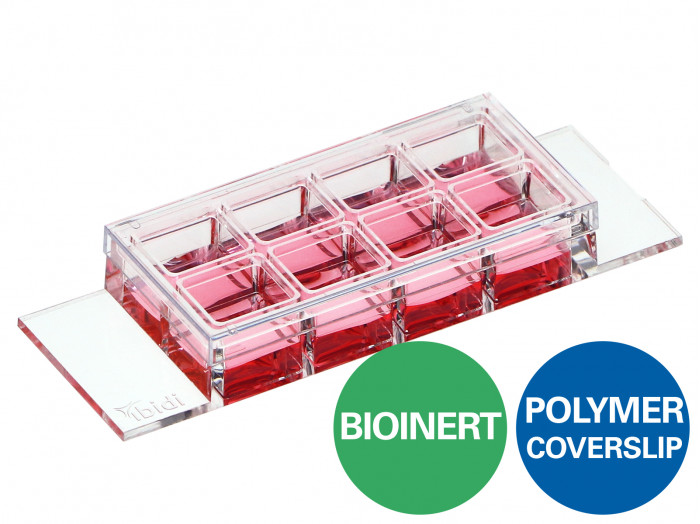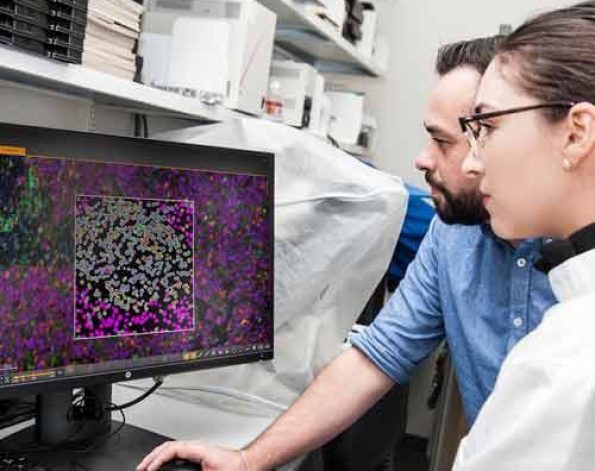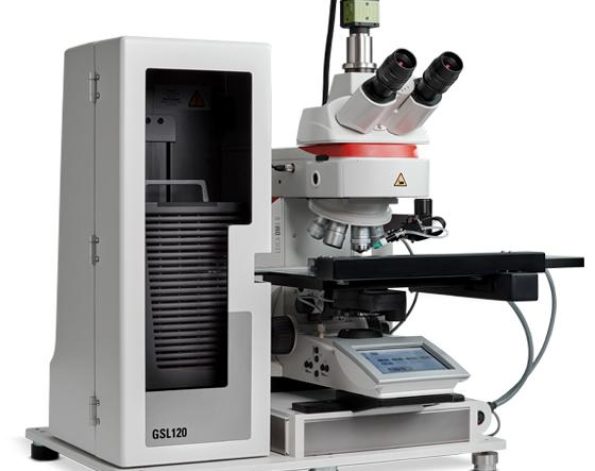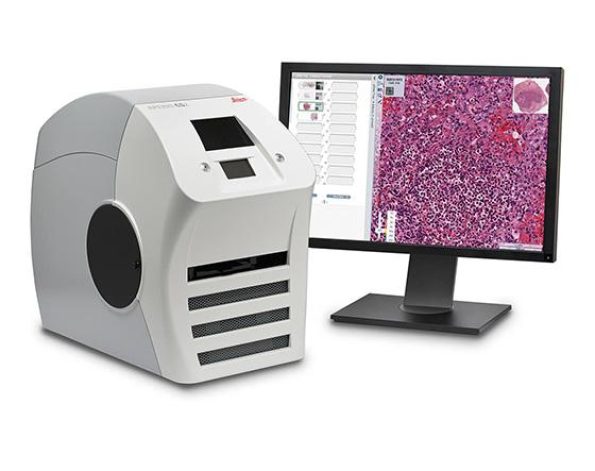A chambered coverslip with 8 individual wells and a non-adherent surface for spheroids, organoids, and suspension cells
- Superior to the standard ultra-low attachment (ULA) surfaces—stable, biologically inert surface for long-term experiments without any cell or biomolecule adhesion
- Excellent microscopic quality without any autofluorescence—100% surface passivation combined with the highest optical quality of the ibidi Polymer Coverslip
- Pcs./Box: 15 (individually packed)
Surface Modification: Bioinert: #1.5 polymer coverslip, surface passivation with Bioinert, sterilized
Applications:
- Generation and long-term culture of 3D cell aggregates (e.g., spheroids and organoids) without any scaffold
- High resolution fluorescence microscopy of organoids, spheroids, embryoid bodies (EBs), and cells in suspension
- Background-free analysis of cell-cell interactions
- Prevention of stem cell differentiation due to attachment
- Culture of suspension cells in a permanently unattached state
- Self-assembly tumor spheroid formation assays
- 3D tumor spheroid models
| ibidi Blog Article |
Do you want to get an overview about the big variety of
3D Cell Culture Models? Then read the ibidi Blog.
Specifications
Bioinert Surface
| Bioinert surface thickness | 200 nm |
| Bioinert surface material | Polyol-based hydrogel |
| Protein coatings | Not possible |
µ-Slide 8 Well high
| Outer dimensions (w x l) | 25.5 x 75.5 mm² |
| Number of wells | 8 |
| Dimensions of wells (w x l x h) | 9.4 x 10.7 x 9.3 mm³ |
| Volume per well | 300 µl |
| Total height with/without lid | 10.8/9.5 mm |
| Growth area per well | 1.0 cm² |
| Coating area per well | 2.2 cm² |
| Bottom: ibidi Polymer Coverslip with Bioinert surface | |
Technical Features
- Chambered coverslip with 8 independent wells and a non-removable polymer coverslip-bottom
- µ-Slide 8 Well high with a non-adherent, passivated Bioinert surface
- Bioinert surface with long term passivation—superior to standard ULA surfaces:
- Ready-to-use without prior surface treatment or preparation
- No adsorption, coating, or binding of proteins, antibodies, enzymes, and other biomolecules
- Non-cytotoxic, biologically inert, and non-degradable
- Imaging chamber slide with excellent optical quality for high-end microscopy
- Individual well walls for minimizing well-to-well crosstalk and contaminations
- Compatible with staining and fixation solutions
- Biocompatible polymer material—no glue, no leaking
- Also available with the ibidi Polymer Coverslip bottom with a tissue culture-treated surface: µ-Slide 8 Well high ibiTreat for various experiments with adherent cells
- Also available as an adhesive version without a bottom: sticky-Slide 8 Well high
- Also available with a Glass Coverslip bottom:
µ-Slide 8 Well high Glass Bottom for special microscopic applications
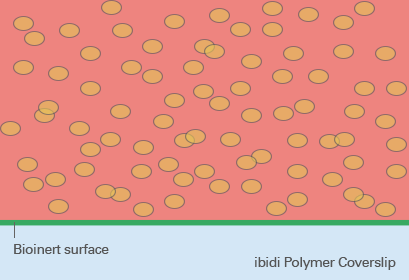
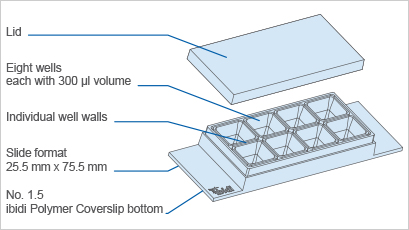
ibiTreat, Uncoated, and Bioinert—A Surface Comparison
ibiTreat
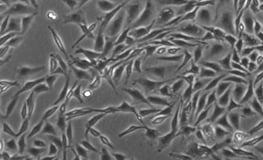
Excellent cell adhesion
- Culture of adherent cells
- ECM coatings possible
The hydrophilic ibiTreat surface provides excellent cell adhesion, even without a defined protein coating. However, ECM protein coatings can be done on ibiTreat without any restrictions. The ibiTreat surface is ideal for culture of adherent cells that do not need any specific coating.
Uncoated
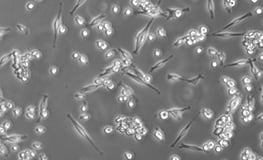
Weak cell adhesion
- Culture of adherent cells
- ECM coatings possible
The hydrophobic Uncoated surface provides weak cell adhesion, if not previously coated with an ECM protein. ECM protein coatings can be done on the Uncoated surface without any restrictions. The Uncoated surface is ideal for the culture of adherent cells that require a specific coating.
Bioinert

No cell adhesion
- Culture of suspension cells, cell aggregates, spheroids, embryoid bodies (EBs), organoids
- ECM coatings not possible
The hydrophilic Bioinert surface hinders any protein attachment, thus inhibiting subsequent cell attachment. Unlike with the ibiTreat and Uncoated surfaces, a coating is not possible. The Bioinert surface is ideal for the culture of suspension cells and cell aggregates.
Application Example: Spheroid Culture and FDA/PI Staining Using the Bioinert Surface
The Bioinert surface is ideally suited for the short- and long-term 3D culture of spheroids and organoids. Since both specific and non-specific cell immobilization are inhibited, cells are forced into a suspended state, enabling formation of small and large spheroids. To assess the viability, the cells were stained using fluorescein diacetate (FDA), which marks viable cells, and propidium iodide (PI), which stains dead cells.
For more detailed information about FDA/PI staining, please refer to our Application Note 33, Live/Dead Staining With FDA and PI (PDF).
Spheroids of different cell lines were generated by the liquid overlay method and transferred to the Bioinert surface for FDA/PI staining and live cell imaging.
HepG2 spheroids

HT1080 spheroid

HUVEC spheroids

MCF7 spheroids

Live cell widefield fluorescence imaging of FDA/PI-stained different cell types as indicated on the Bioinert surface. FDA (green) indicates living cells at the outer spheroid layers. PI (red) marks dead cells within the necrotic spheroid center. Note the different spheroid morphology, which depends on the cell type. Microscope: Nikon Eclipse Ti, 4x objective lens.
